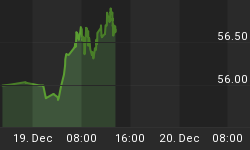Article originally submitted to subscribers on 13th June 2007...
The prospect of higher interest rates looms large.
New Zealand increased short-term interest rates to 8%. South Africa will follow soon and a string of other countries has threatened to follow suit.
The cover story is that the economies of the world are so strong that Central Banks have to raise interest rates in order to cool down inflationary pressures. We find the prospect of higher rates (in light of Central Bank printing) akin to Dracula running a blood drive because supplies are low!
Since 2002 we have witnessed the largest blizzard of paper money the world has ever seen. Almost all OECD countries (and much of the developing one's as well) have been expanding their money supply by over 10% per year. That's an awful lot of money which has subsequently found its way into Stock Markets, Real Estate, Commodities, Bonds and collectibles.
So when Central Banks come out and say that the world economy is on steroids they should know, they put it there. What they are really saying is that that the effect of their money printing is now finding its way into more visible consumer prices. Which means money printing is becoming less effective as it is being seen for what it really is - currency debasement.
Remember, the definition of inflation is not the increase in price levels but the increase in money supply. The general public has been confused into naming price increase as inflation instead of it being recognized for what it is, the result of too much money being printing.
The main areas where consumers notice price inflation are in Gas and Food.

Chart 1 - Agriculture price index (top); Crude Oil (middle); 2-year yields (bottom)
As can be seen in the above chart, agriculture / food prices (top) have trending higher since 2002 and have been in a steep uptrend since 2005. The price of oil (below in green) has also been trending higher since 2002. [We won't even mention the disastrous effect that switching the Corn crop from a food source to Ethanol based fuel is having on the price of these commodities.]
At the bottom of the chart are the yields on 2-year Treasuries. The rise in Food and Oil prices is causing short-term interest rates to rise.
So why have we remained so complacent about inflation up to now? And how do we measure inflation expectations anyway?
We have been conditioned to think that inflation will show up in interest rates (which they do) and the most watched interest rate in the US is mortgage rates.

Chart 2 - 30-Yr Fixed Mortgage Rates
Now 30-year mortgage rates have not shown the massive increases that lets say the 2-year rates above have shown. And that's because recycled foreign money has been keeping long-term interest rates artificially low. So here's one reason that inflation expectations have remained low whilst Central Banks have been able to pump away.
So how do you measure inflation expectations anyway?
One way is to compare the performance of inflation protected bonds versus unprotected bonds of the same maturity.

Chart 3 - Treasuries vs. Inflation Protected Bonds (red); 10-yr yields (green)
When the red chart if falling it means unprotected bonds are outperforming inflation protected bonds and visa-a-versa. As can be seen investors have not deemed it necessary to purchase inflation protection as 10-year rates have been falling (green line). It is also worth noting that inflation expectations (red line) follow 10-year rates with a 2-3 month time lag. 10-year rates took off northwards in March so inflation expectations are only starting to reflect this increase.
What the above chart says is that the public are about to become a lot more aware and vocal about the issue of inflation.
Gold
The uniqueness of Gold is that it understands inflation very well. Better than any other instrument. Gold also understands inflation in its purest sense and that is the increase in money supply. Hence we have seen Gold prices rise steadily since 2002 in line with an increase in money supply. [And it is now obvious why certain powers would prefer the price of Gold to remain low.]
Yet now we see Gold falling (inexplicably) in the face of rising price inflation (and Central Bank sabre rattling).
The reason is that Central Bankers can only remain in business if their money shenanigans remain hidden from the masses. That is, if inflation expectations are high, their money games have little effect as people move to protect themselves ahead of Central Bank transparent printing.
With inflationary expectations now rising, Central Banks have to ease off the pedal and slow their support of asset markets. Money supply growth will slow and Gold will/is falling.
And here's the final word:
The fundamentals are therefore short-term bearish for Gold and we will probably see further weakness over the next couple of months (Gold is seasonally weak in Summer). But once the Central Banks have curbed inflation expectations sufficiently, it will be business as usual and time to back up the truck on those juicy undervalued Gold Juniors.
Keep some powder dry!
More commentary and stock picks follow for subscribers...















